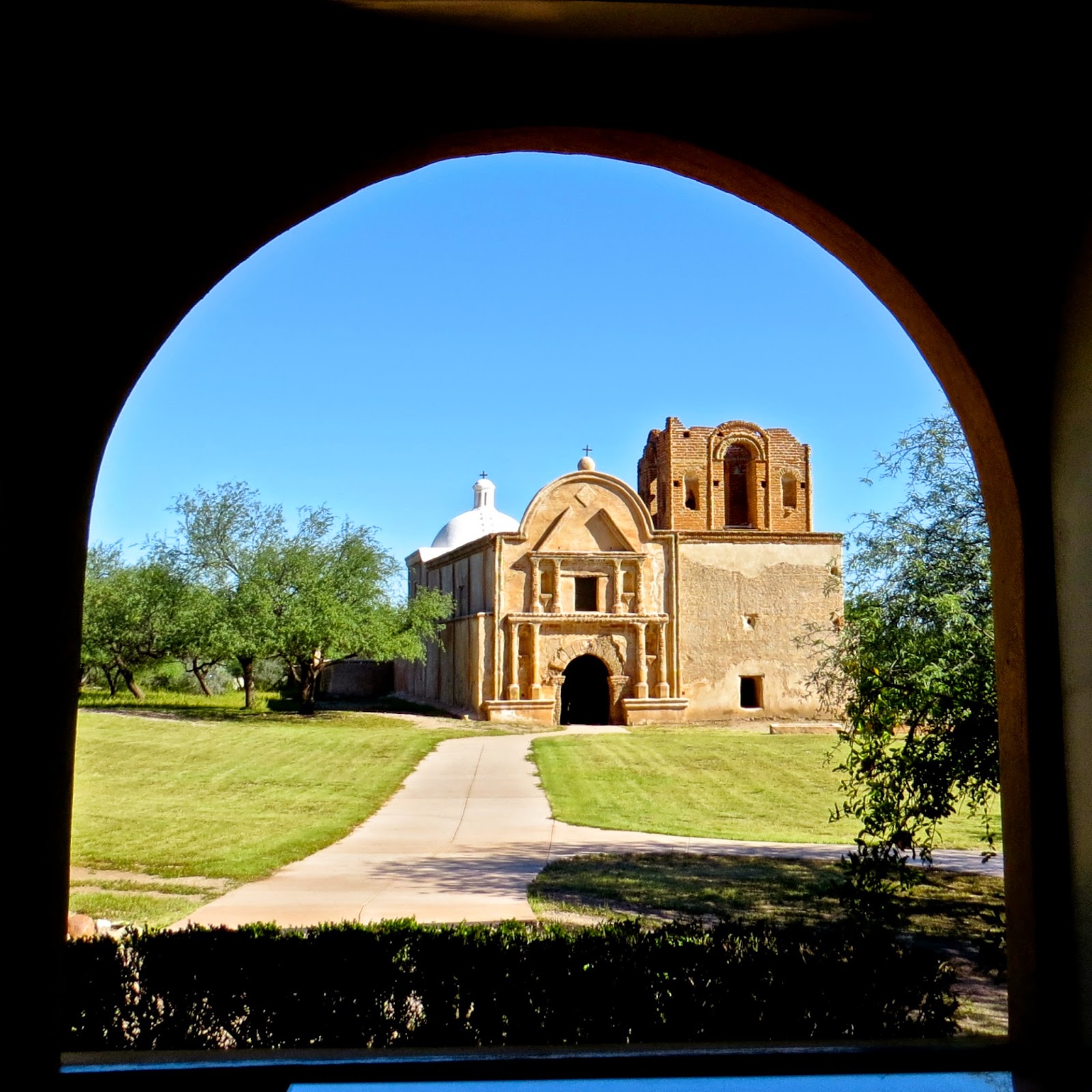There’s a lot to see and do in southern Arizona
– and, its finally cooling down enough to get out and do some exploring. Last week we headed about 20 miles south
along I-19 to Tumacacori. Though it
isn’t too far away, we most often go there with guests. But we haven’t been for
a few years. So, after walking the dogs and grabbing a quick breakfast, off we
went.
Since we moved here, the volunteers and park service staff have completed several changes to the park, including a new museum, a restored historic orchard, and other improvements. It’s great to see positive changes within our national parks system, especially during difficult economic times.
Gary was delighted that we got there early
enough to take advantage of the great morning sunlight. So he disappeared to get some photographs
while I absorbed the tranquility of this magical piece of land along the Santa
Cruz River. This spot has undergone many
changes.
When the Spanish began moving north out of
Mexico (aka New Spain), they followed this river, establishing a series of
missions. Father Kino, a Jesuit priest, arrived
in Tumacacori in1691 and established a mission on the east side of the Santa
Cruz.
 |
| Mission photographed from the visitors center |
The Jesuits found the Pima (now referred to as Tohono O’odham) a peaceful, agrarian people.
The PIma people grew corn, squash and beans, hunted locally, and
harvested other foods in the surrounding desert. They also had to deal with more aggressive
native peoples from time to time.
 |
| Re-creation of Tohono O'odham house and ramada (shade structure), c. 1700s |
The Jesuits brought with them livestock, winter
grains (wheat provided a good new food), and fruit trees to be included in
their missions. Thus a new system began
where the Pima peoples (and others) could be converted to a new religion, have additional
sources of foods, and more security from external raids.
And, they provided manpower to build the
missions. In today’s world, most would consider this system a bit unfair, but in
the late 17th century it was what it was.
Tumacacori was not unique; several other
missions were also established along the Santa Cruz during this time period. In the southern AZ area, one of those missions,
San Xavier del Bac in Tucson, is still an active church (and well worth
visiting).
Thanks to a 1908 federal decision to creat the
Tumacacori National Monument, the remains of this site have been protected and
allow us to visit an important historical site.
In the 1750s, Tumacacori Mission was moved to
the west side of the river, where a small church was constructed. This placed it closer to protection from the new
Tubac presidio (military) a few miles north. The historic buildings, orchards,
etc. in the park are on this location.
Due to changes within New Spain, Franciscan priests were assigned to replace the Jesuits in the Santa Cruz missions in the early 1770s. And more changes occurred as expansions began for the Tumacacori church, walls around the compound, and more Spanish style adobe housing for the Pima (replacing their traditional beehive-shaped dwellings).
Due to changes within New Spain, Franciscan priests were assigned to replace the Jesuits in the Santa Cruz missions in the early 1770s. And more changes occurred as expansions began for the Tumacacori church, walls around the compound, and more Spanish style adobe housing for the Pima (replacing their traditional beehive-shaped dwellings).
 |
| Due to reduced funds, the church bell tower cap was not completed |
 |
| Current state of sanctuary with 75-ft nave, completed in 1820s |
 |
| Museum depiction of completed sanctuary - no pews! |
 |
| Remains of convent building |
 |
| Behind the church is a round mortuary and cemetary |
Over the past several years, the compound's fruit orchard has been carefully restored. Finding the heritage plants for propagation is a story in itself. Volunteers work to tend these trees and the results are a beautiful garden.
The tree shown here is a white pomegranate - one of the fruits imported by the priests so long ago.
The museum provides a wonderful trip through the changes at Tumacacori, with depictions of some of the structures, which are now in ruins.
The tree shown here is a white pomegranate - one of the fruits imported by the priests so long ago.
The museum provides a wonderful trip through the changes at Tumacacori, with depictions of some of the structures, which are now in ruins.
Once again, we had a great time visiting this site and recommend it to you – the next time you are nearby. For those wishing a fairly shaded hike here in the desert – you can hop onto the De Anza Trail system (near the orchard) for a few miles along the river.
Oh! While the Tumacacori community is not large, there are a couple places across from the park where you can find a bite to eat. We were there on a Sunday morning - too early for lunch.






No comments:
Post a Comment